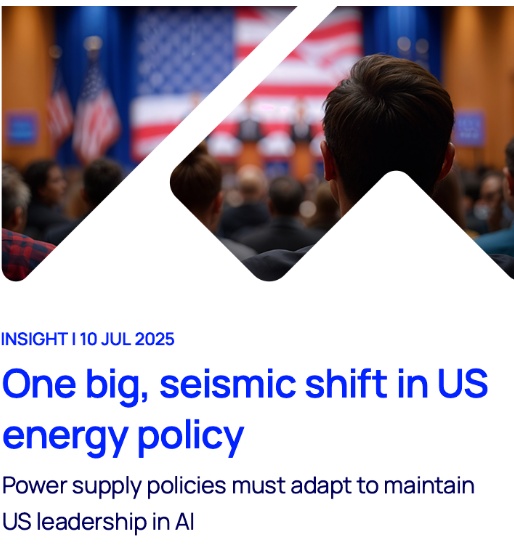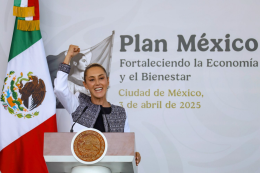Wood mackenzie | in-depth analysis of the impact of the "obbba" on the u.s. energy industry
On July 4th, President Trump signed the One Big Beautiful Bill Act (OBBBA), marking a significant shift in U.S. energy policy. The act introduces new restrictions on renewable energy investments, identifies "winners" in emerging technology sectors, and prioritizes the upstream oil and gas industries as core priorities. Additionally, the act incorporates the current administration's proposed Liberation Day Tariff, further reducing U.S. reliance on China's low-carbon supply chain. Tax credits for low-carbon energy may be phased out more quickly, have more limited applicability, or be directly abolished. According to the Tax Foundation, the total amount of credits available to the industry over the next decade is expected to be reduced by approximately $500 billion.
The research team at Wood Mackenzie has recently released a series of reports on the impact of new legislation on various energy sectors. Overall, we expect that investment in the wind and solar PV sectors will be significantly lower than the levels supported by the Inflation Reduction Act (IRA). The IRA had prompted a substantial shift in incentives within the U.S. tax system toward low-carbon energy, but this trend has now been leveled out. However, investment will not collapse entirely; renewable energy investment will be supported by the following market factors: growing electricity demand, state and corporate policies, challenges facing the growth of gas-fired power generation, and highly competitive levelized cost of electricity (LCOE) in many regions.

Faced with the significant uncertainty of new power supply investments, the retirement of thermal power generation facilities may be delayed, electricity prices will rise, and the connection of large electrical loads will also be postponed. Without regulatory reform, the introduction of new tariffs for large electrical loads, and the promotion of domestic technological innovation, the United States may risk losing its advantage in the global AI competition.
The early expiration of manufacturing tax credits will reduce future energy demand in the clean energy manufacturing sector; meanwhile, delays in new power supply may slow down the deployment of data centers nationwide, as these facilities will need to compete for scarce grid capacity.
OBBBA significantly reduced the time window for wind and solar projects to qualify for full tax credits, requiring projects to be put into operation by December 31, 2027. However, projects that start construction within 12 months after the enactment of the act can have their eligibility extended to mid-2030, creating a critical "safe harbor" period.
Wood Mackenzie predicts that between 2025 and 2030, under the OBBBA scenario, the projected installed capacity of wind and solar power will be about 100GW less than under the Inflation Reduction Act scenario. This means that during this period, the total installed capacity of wind and solar power is expected to increase by about 25%, whereas under the Inflation Reduction Act framework, the originally projected increase was 55%.
We expect a surge in photovoltaic installations in 2025-2026 as developers rush to qualify for tax credits. However, over a 10-year period, the installed capacity is projected to be 17% lower than our previous baseline forecast.
By 2030, onshore wind installations are expected to remain active as developers strive to advance qualified projects to meet tax credit deadlines. However, in the long run, onshore wind installations are expected to decline significantly. The offshore wind sector will be the most affected, as its economic viability largely relies on tax credits. Projects that have not yet started construction or have not made a final investment decision (FID) are likely unable to proceed.
The impact is relatively low because the effective period of its tax credits will be extended by 8 years. However, considering the industry's heavy reliance on the Chinese supply chain, the regulations related to "covered foreign entities" represent a tangible risk.
The industry's challenges lie not only in complying with policy regulations but also in proving its own compliance when seeking project financing. In addition to "specific foreign entities," prohibited foreign entities also include broadly defined "foreign-influenced entities," which creates a significant administrative burden in clarifying the sources of investments, technologies, components, and raw materials. We still expect U.S. energy storage capacity to grow, but the growth rate will slow down due to requirements related to "covered foreign entities."
For emerging low-carbon technologies, the situation is mixed. Most of the CCUS projects currently under development in the United States focus on geological storage and will not benefit from the more favorable carbon capture tax credits aimed at enhanced oil recovery technologies and other forms of carbon utilization. However, some operators may decide to shift to EOR projects.
Operators with existing CCUS-EOR (carbon capture, utilization, and storage - enhanced oil recovery) infrastructure, such as Occidental and ExxonMobil, are among the largest beneficiaries of the act. The increased tax credit for technologies that improve oil recovery rates could bring additional revenue to these companies' own CCUS projects, while also enhancing the attractiveness of their transportation and storage networks to other companies.
The new legislation will further cause the economic benefits of green hydrogen to fall short of expectations, while blue hydrogen (natural gas combined with carbon capture) will become more economically advantageous. The reduction in the scope of the 45V tax credit means that over 75% of green hydrogen storage projects in the U.S. will not qualify, hindering the rapid advancement of these projects. Under the current policy, blue hydrogen projects receive support from the 45Q tax credit related to CCUS, significantly enhancing their financing viability.
Both industries continue to receive policy support and retain the main incentives of the Inflation Reduction Act. Nuclear energy receives additional support through funding for improved small modular reactors (SMRs); geothermal energy benefits from a stipulated annual lease sale system, replacing the previous biennial arrangement.
Electric vehicle incentives have been canceled. As a result, Wood Mackenzie has lowered its forecast for the U.S. pure electric vehicle market share in 2030 from 23% to 18%. Now, the growth of electric vehicles will come from companies with mature supply chains or from non-local enterprises entering the high-end market with pure electric vehicles.
OBBBA has greatly promoted upstream industries, specifically including:
-
Mandatory quarterly lease sales in 9 Western U.S. states.
-
Increase the number of lease sales in the U.S. Gulf of Mexico by 30 times over the next 15 years.
-
Reduce the onshore mining area usage fee from 16.67% to 12.5%.
-
Reopen Alaska's Arctic National Wildlife Refuge for competitive leasing.
-
The collection of methane fees will be postponed until 2035.
-
Allow full deduction of intangible drilling costs
-
Extend the large-scale accelerated depreciation policy for productive real estate until 2031.
Even with more incentives, domestic coal is unlikely to see a revival. The U.S. Department of the Interior has opened at least 4 million acres of federal land for coal leasing in the 48 contiguous states and Alaska.
Wood Mackenzie believes that, in terms of OBBBA alone, it will not stimulate new thermal coal mining projects. In theory, new federal coal leasing sales are expected to offset the decline in mining area usage fee income, but the reduction in coal demand will offset the anticipated benefits from leasing sales.
Direct Air Capture (DAC) projects combined with Enhanced Oil Recovery (EOR) will now receive a tax credit of $180 per ton of CO2, the same as for geological storage. This may result in more captured CO2 being directed toward oil recovery rather than permanent sequestration. As the world’s third-largest methane emitter, the United States has postponed the implementation of methane waste emission charges by ten years to 2034, which will slow progress on methane reduction efforts.
【Copyright and Disclaimer】The above information is collected and organized by PlastMatch. The copyright belongs to the original author. This article is reprinted for the purpose of providing more information, and it does not imply that PlastMatch endorses the views expressed in the article or guarantees its accuracy. If there are any errors in the source attribution or if your legitimate rights have been infringed, please contact us, and we will promptly correct or remove the content. If other media, websites, or individuals use the aforementioned content, they must clearly indicate the original source and origin of the work and assume legal responsibility on their own.
Most Popular
-

List Released! Mexico Announces 50% Tariff On 1,371 China Product Categories
-

Nissan Cuts Production of New Leaf EV in Half Due to Battery Shortage
-

New Breakthrough in Domestic Adiponitrile! Observing the Rise of China's Nylon Industry Chain from Tianchen Qixiang's Production
-

Dow, Wanhua, Huntsman Intensively Raise Prices! Who Controls the Global MDI Prices?
-

Mexico officially imposes tariffs on 1,400 chinese products, with rates up to 50%






